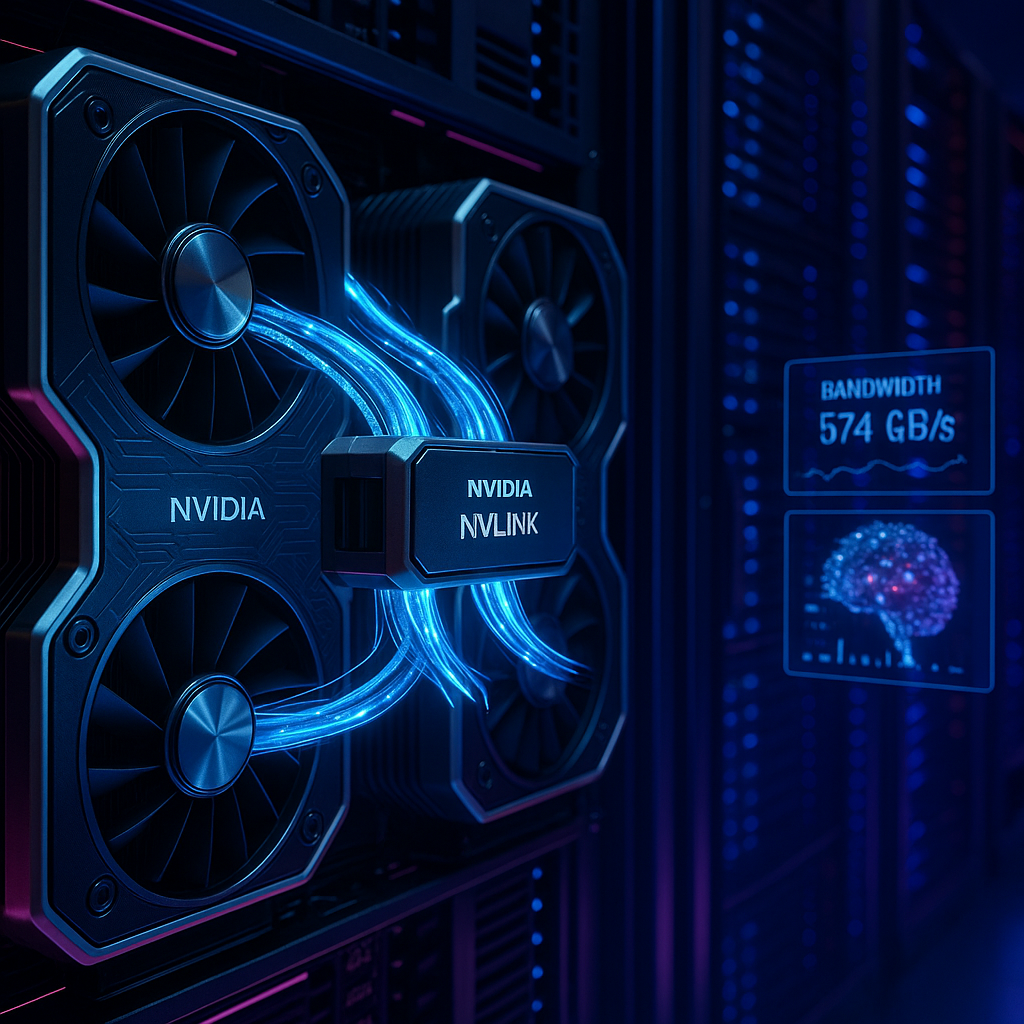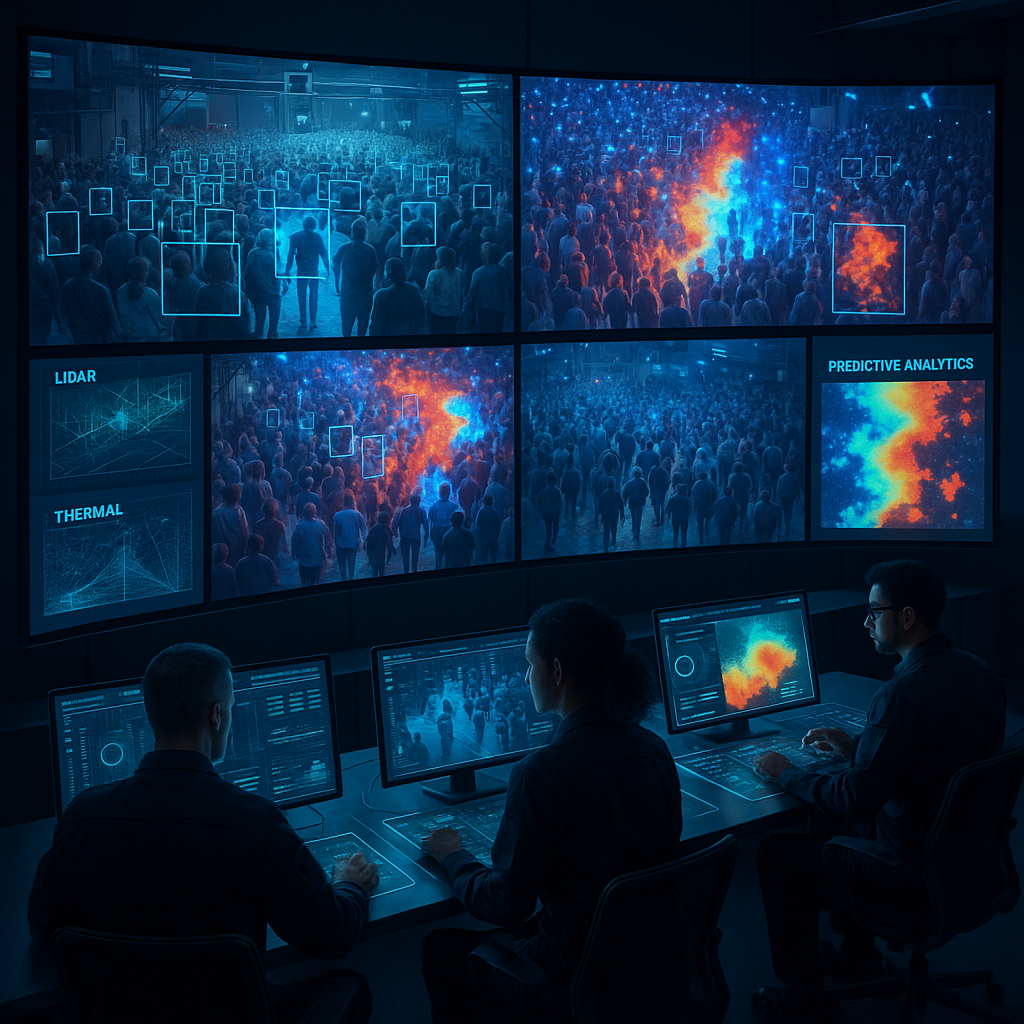Key Takeaways
If you believed that the internet set the pace for digital connectivity, it’s time to reconsider. NVIDIA’s NVLink spine is quietly redefining the foundations of AI by connecting GPUs at extraordinary speeds that leave conventional networks in the dust. This technology does more than outpace public internet connections—it fundamentally transforms AI computing, enabling breakthroughs that ripple across industries far beyond the data center.
- NVLink spine eclipses internet-era networking: Its bandwidth and efficiency far surpass traditional connections, delivering a dedicated AI superhighway for seamless GPU communication.
- Purpose-built to feed AI’s insatiable hunger: Designed for massive data movement, NVLink spine propels AI workloads by transferring colossal datasets between GPUs, dramatically accelerating model training and parallel computation.
- Unified memory transforms chaos into coherence: By unifying memory across thousands of GPUs, the architecture enables disparate hardware to function as a single, cohesive AI “brain,” removing traditional bottlenecks.
- A foundation for tomorrow’s AI breakthroughs: NVLink spine is the unseen backbone behind advancements in language models, autonomous vehicles, healthcare analytics, climate research, and more.
- Enterprise-grade performance becomes accessible: The power that fueled elite supercomputers is now reaching mainstream sectors, bringing advanced AI acceleration to industries from finance to education and beyond.
- Rethinking connectivity in a post-internet world: Next-generation internal data highways are reshaping assumptions about networking, prompting fresh perspectives on information flows, infrastructures, and the architecture of intelligence.
Venture beneath the surface of the AI renaissance—where the pulse doesn’t beat on public networks, but deep within the electrified veins of NVIDIA’s NVLink spine. Discover how this AI highway is quietly fueling the next leap in distributed machine intelligence.
Introduction
The fastest digital connections no longer traverse oceans or citywide fiber—they surge inside NVIDIA’s data centers, powered by an intricate network that rivals everything the public internet has achieved. NVLink spine creates an ultra-fast, integrated communication fabric between GPUs, enabling AI systems to move data at scales beyond what the online world can easily conceive.
Yet, it’s about more than speed. NVLink spine transforms isolated processors into a unified, thinking entity, driving progress in language models, autonomous vehicles, medical diagnostics, and frontier research. As these circuits become the bedrock of machine learning, boundaries between servers and networks blur, weaving a future where information and intelligence grow within the core of the machine. Let’s explore how NVLink spine is rewriting the playbook for artificial intelligence.
Stay Sharp. Stay Ahead.
Join our Telegram Channel for exclusive content, real insights,
engage with us and other members and get access to
insider updates, early news and top insights.
 Join the Channel
Join the Channel
Understanding NVLink Spine Architecture
NVLink spine disrupts conventions by reinventing how GPUs share information, pushing data transfer beyond prior limits. Its architecture forms a sophisticated mesh, connecting GPUs directly over high-bandwidth channels and enabling real-time collaboration on workloads that would challenge standard systems.
Technical Foundation
At its core, NVLink spine uses a dedicated high-bandwidth fabric with specialized ports for direct GPU connections. Each GPU can maintain multiple simultaneous NVLink links, creating a resilient mesh that achieves:
- Up to 900 GB/s bidirectional bandwidth per GPU
- Full-duplex, peer-to-peer communication with minimal latency
- Dynamic routing for optimized data paths
- Cache coherency, ensuring consistent shared data across the GPU network
These choices allow resources to be pooled and managed dynamically, boosting collective intelligence and seamless execution of massive AI models.
Comparison with Traditional Networking
The traditional PCIe interface, long the standard, faces inherent limits that NVLink spine decisively overcomes:
- Bandwidth Disparity
- PCIe Gen 4: 64 GB/s bidirectional
- NVLink spine: Up to 900 GB/s bidirectional per connection—a 14x leap
- Impact: AI systems can move larger datasets and tackle more complex models than ever.
- Latency Optimizations
- PCIe pathways traverse multiple system layers, causing delays.
- NVLink spine enables direct GPU-to-GPU communication, slashing latency and improving responsiveness by a factor of 2–3.
- Implications: AI models synchronize and scale more efficiently, advancing research and real-world uses from robotics to financial forecasting.
These advantages reshape not just speed, but the whole approach to modern AI system design and deployment.
AI Applications and Impact
Large Language Model Training
Training advanced language models requires seamless communication among a cluster of GPUs, orchestrated for model parallelism and huge parameter sets. NVLink spine delivers notable advantages:
- Enables true model parallel training without communication bottlenecks
- Reduces overhead in attention-based architectures—crucial for transformer models
- Allows seamless scaling for models spanning billions of parameters by unifying memory resources
- Accelerates training times, reducing completion by up to 40% for models like GPT-3 compared to traditional PCIe setups
These benefits drive practical advances in real-time language translation, conversational agents, and intelligent search.
Computer Vision, Healthcare, and Scientific Computing
NVLink spine’s leap forward benefits a diverse range of demanding tasks:
- 3D Rendering & Visualization: Real-time ray tracing on multi-GPU platforms, powering advanced graphics for gaming, medical imaging, and AR
- Scientific Computing: Speeds up climate simulation, particle physics, and drug discovery by handling vast datasets swiftly
- Healthcare Applications: Supports genomic sequencing, image analysis, and personalized treatment by removing data bottlenecks for deeper learning
- Financial Modeling: Provides faster risk assessment, real-time fraud detection, and optimized portfolio analytics
- Education and Adaptive Learning: Empowers learning platforms to personalize instruction dynamically with rich student interaction data
NVLink spine’s influence stretches from precision medicine and stock market analysis to breakthrough educational technologies—impacting both high-performance research and real-world products.
Implementation in Modern Supercomputers
Integrating NVLink spine signals a defining moment in supercomputing, enabling new frontiers of capability across sectors.
NVIDIA DGX SuperPOD and Beyond
The DGX SuperPOD is a compelling demonstration of NVLink spine scalability:
- Seamlessly orchestrates thousands of GPUs, tackling the largest AI models effortlessly
- Balances workloads dynamically, ensuring peak efficiency
- Includes smart power and fault controls, minimizing risk and energy use
- Ready for rapid deployment in contexts ranging from labs to enterprise AI platforms
Real-World Institutional Impact
Organizations worldwide are realizing tangible gains:
- NERSC: Achieved a 2.5x increase in scientific simulation performance, propelling fusion energy and astrophysics
- Oak Ridge National Laboratory: Saw a 30% drop in training times for climate models, accelerating vital research
- CERN: Improved analysis speeds by 45%, opening new possibilities in particle physics
- Healthcare Providers: Accelerated medical image analysis, aiding faster patient care
- Financial Firms: Enhanced throughput for real-time fraud detection and risk mitigation
NVLink spine’s power is fueling a new generation of discovery in academia, healthcare, finance, and beyond.
Future Implications and Evolution
NVLink spine’s evolution is only gaining momentum, expanding through both technology and industry reach.
Next-Generation Roadmap
Emerging developments promise even greater capability:
- Enhanced bandwidth: Jumps to 1.5 TB/s per GPU through denser integration and optical links, readying for future AI challenges
- Greater adaptability: Lower power consumption and improved resilience open new deployment settings, from clouds to edge devices
- Smarter data optimization: Fresh compression methods and dynamic routing make large-scale, real-time data processing accessible for industries like logistics and environmental monitoring
Transforming AI System Design
Such advances are reshaping the very rules of distributed intelligence:
Stay Sharp. Stay Ahead.
Join our Telegram Channel for exclusive content, real insights,
engage with us and other members and get access to
insider updates, early news and top insights.
 Join the Channel
Join the Channel
- Distributed, brain-inspired neural architectures: AI models are increasingly interconnected, reflecting neural patterns rather than isolated nodes
- Fluid resource scaling: Systems dynamically grow and shrink to meet demand, balancing power and performance
- Creative architectures: Developers can explore new collaborative models for AI, freed from previous hardware constraints
These innovations are spurring progress in autonomous mobility, robotics, diagnostics, and global climate science.
NVLink spine’s real significance goes far beyond technical statistics—it’s pushing us to reconsider how we design networks, data flows, and intelligent systems. This transformation is shaping not merely the tools we use, but our vision for the future union of artificial and human intelligence.
Conclusion
NVLink spine stands as a quiet revolutionary—effortlessly dissolving traditional barriers to information and intelligence inside modern computing. By weaving a high-speed mesh that unlocks extraordinary collaboration between GPUs, it’s enabling discoveries and breakthroughs across every field—from genome decoding and climate modeling, to next-generation learning and autonomy.
What was once exclusive to supercomputers is now unlocking new potential across mainstream industries, democratizing access to unprecedented AI acceleration and creative possibility. The change is not just about speed. It’s about fundamentally reimagining connectivity and intelligence architecture. As these invisible highways multiply, those able to harness them will be the ones at the vanguard of future innovation.
Looking forward, the rise of NVLink spine hints at something bigger—not just another milestone, but a bold new chapter in distributed cognition and shared intelligence. As the boundaries between human creativity and machine ingenuity blur, the true opportunity is not simply to adapt, but to boldly chart new paths across these growing internal landscapes of possibility.





Leave a Reply